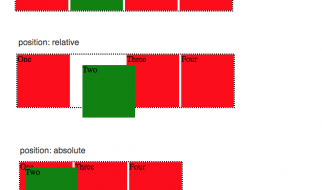Nearly everyone who?s been into tabletop roleplaying games has had idle thoughts like this: ?What level would I be in the real world if I were a character? How wealthy am I in gold pieces? How many Hit Points do I have?? these are fun little debates that usually don?t have an answer, but they?re interesting chatter around a table with some beers and rulebooks. The question of wealth, however, does have an answer. The value of the gold piece is something that often gets debated on the internet and even got an official answer from Wizards of the Coast back in 2006.
According to WoTC:
So let?s generously assume a D&D gold piece contains approximately 1/4 ounce of gold (the coin itself might weigh more, depending on the purity of the coin, etc.). Taking a look at today?s prices, gold is currently trading at around $580 per ounce. That means a D&D gold piece might be considered the equivalent of roughly $145.
Note that this question was answered in 2006, meaning the numbers today are different. With the price of gold on the day this was written, a single gold piece would go for 330.43. That?s a good start and an easy answer, but there are a lot of confounds involved here when getting to that figure.
First, it?s pretty easy to see that we haven?t had quite that much inflation in the course of 11 years. $330 in 2017 dollars has more purchasing power than $145 in 2006 dollars. Gold?s value rises higher than inflation for a lot of reasons, it?s seen as a safe investment, industrial metal or speculation commodity instead of being just a medium of exchange. On the other hand, mining and exploration techniques have advanced heavily since the middle ages, making the supply of gold larger, while on the other other hand, the globalized economy has given the small fish of the world?s gold supply a bigger pond to swim in, which changes the context of its scarcity entirely. In essence, using the current value of gold to peg the purchasing power of the Dungeons and Dragons gold piece is not really an accurate way of giving it a number.
One way of determining value would be to look at a time with a fairly modern economy where currency was still backed by gold. This gets a little bit into the weeds as there are both official and unofficial ends to the gold standard method of pegging the dollar (For the sake of having one metric and ease of research, we will be using US policy and dollars)
The effective ?end? of the Gold standard took place on January 30th, 1934 with the Gold Reserve Act, nationalizing the United States? supply and making privately held gold investment illegal, effectively ending the use of gold itself as the official medium of exchange and detaching the dollar?s purchasing power from its commodity price. You might immediately be tempted to use January 29th, 1934 as the benchmark price to get your final figure, but investors were well aware of the incoming changes to the law, which makes for abnormal investment behavior that wouldn?t allow for a price that reflected gold?s actual value.
Monetary policy surrounding gold was based on stability before the Reserve Act and the market forces that provoked it began impacting prices, it had long been staying at $20.67 an ounce in US Dollars, making a gold piece worth roughly $5.17. Adjusted for inflation to 2017 US Dollars, this makes a gold piece have roughly the purchasing power of $74.58
This still suffers from problems. Although the dollar was gold-backed, determining money?s value between eras of completely different economies, with different scales of industrialization, trade and manufacturing is nearly impossible from the price of an investment commodity alone. The globalized trade of the early 20th century and gold?s relationship with it doesn?t really reflect the context of its usage in the game.
The key, however, may be in the price of goods with a generally stable price and demand over a long period of time that are in common use and not financial instruments that are vulnerable to market conditions or investment behavior. Let?s start with weapons:
The AR-15 rifle is one of the most popular consumer weapons in the United States, and for the sake of brevity, it?s about the modern equivalent of a longsword. A no frills AR-15 retails for $600-$700. As of the 5th edition player?s handbook, a longsword costs 15gp. Splitting the difference on the AR-15?s price and using it as a benchmark, a gold piece is worth $43.33
There are some problems there, however, if you want to equate the value of weapons from a fantasy setting to the modern world. There?s more need for swords in a fantasy world than rifles today. Without getting into a gun control debate, modern firearms owners are hobbyists, hunters, target shooters, farmers and ranchers, and people who like putting neat tactical attachments on their weapons because they look cool. Bottom line, they?re not fighting off orcs or raiding long forgotten ruins. Plus, longswords were handcrafted. Even a cheap sword had someone putting in a decent amount of skilled labor and difficult to obtain metal as opposed to the industrial process of making a rifle with machinery and obtaining raw materials in a globalized economy. It?s a nice thought, but it won?t do by itself.
To find a commodity that would make a useful benchmark, it needs to be just as necessary today as it would be in a medieval fantasy world. Ideally, it would not be frequently used in D&D gameplay so that the price wouldn?t be altered by game design considerations. In the best case scenario, we?d have pricing data from a time when technology was on par with a low tech fantasy world and stop having to account for industrialization, globalization or modern economies. Luckily, a good exists that meets all of those criteria.
Food.
Clearly, agriculture has developed immensely since the era of knights and castles, but basic food is a commodity with a relatively stable price and demand over the long term with very detailed records kept about how much it costs. While there are some fluctuations in the price of food due to the unpredictable nature of medieval agriculture, war, and other conditions, it?s a better reference point than other items. If you can get both grain price data and currency conversion rates from a year with the relative technological capacity of a Dungeons and Dragons campaign world, you can get a good idea of what the purchasing power of a gold piece is.
Based on data taken from this dataset of historical grain prices, and using this historical currency converter, a Winchester Bushel of grain (291 liter volume) in 1270 England (adjusting for outlier prices and regular seasonal changes) cost (give or take) 5 shillings, or 133.18/$180.74 in modern currency.
In the 5th edition player?s handbook, a pound of wheat is worth 1 copper piece. A Winchester Bushel weighs about 506.82 pounds, at the given exchange of 100cp to 1 gp, that gives a price on a gold piece of about $35.66. The methods to get this figure seem pretty solid, but could use some further examination.
The real question behind figuring out the value of the gold piece is ?what can it buy??. Although the game?s world based on middle ages Europe would likely have a lower standard of living than today, the rulebook gives a guide to the cost of living expenses by quality. ?Squalid? living conditions are priced at 1 silver piece or 0.1 gp per day. Using the different metrics for calculating potential prices of a gold piece we get the following figures for an impoverished existence:
Modern gold price: $33.04
Gold-backed dollar price: $7.46
Weapon-tied price: $4.33
Grain-tied price: $3.56
Compare this to what is considered the benchmark of ?absolute poverty? by the UN of living on less than $2.00 a day. The grain-based metric seems to hit closest to the mark, although the weapon-based price isn?t too far off either. It?s clearly an imperfect figure, but again, that?s taking a single quick round number given by game designers. It?s still a lot closer than the other ones, however.
Wages can help corroborate the grain-tied price as well. Average service and labor costs are given in the rulebook as well. An ?unskilled laborer? has a wage of 0.2 gp, or about $7.13 a day using the grain metric. Assuming a 6 day work week that would have been standard in a pre-industrial, pre-union, pre-labor regulation society, we get an average yearly wage for an unskilled laborer of $2231.69. This figure is about on par with low wage workers in developing economies.
The figure tied to grain seems to hold up the best out of the bunch, with the weapon-tied price not too far off. It?s not an absolute fact, but I?m personally satisfied with that answer. It uses pricing data from sources contemporary to a similar technological level as the game, involves a raw commodity with steady demand, and manages to get around all those technological and economic confounds we find when trying to compare D&D goods and prices to modern goods and prices. It?s not perfect, but it?s a strong estimate.

